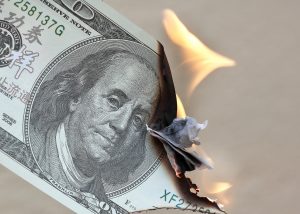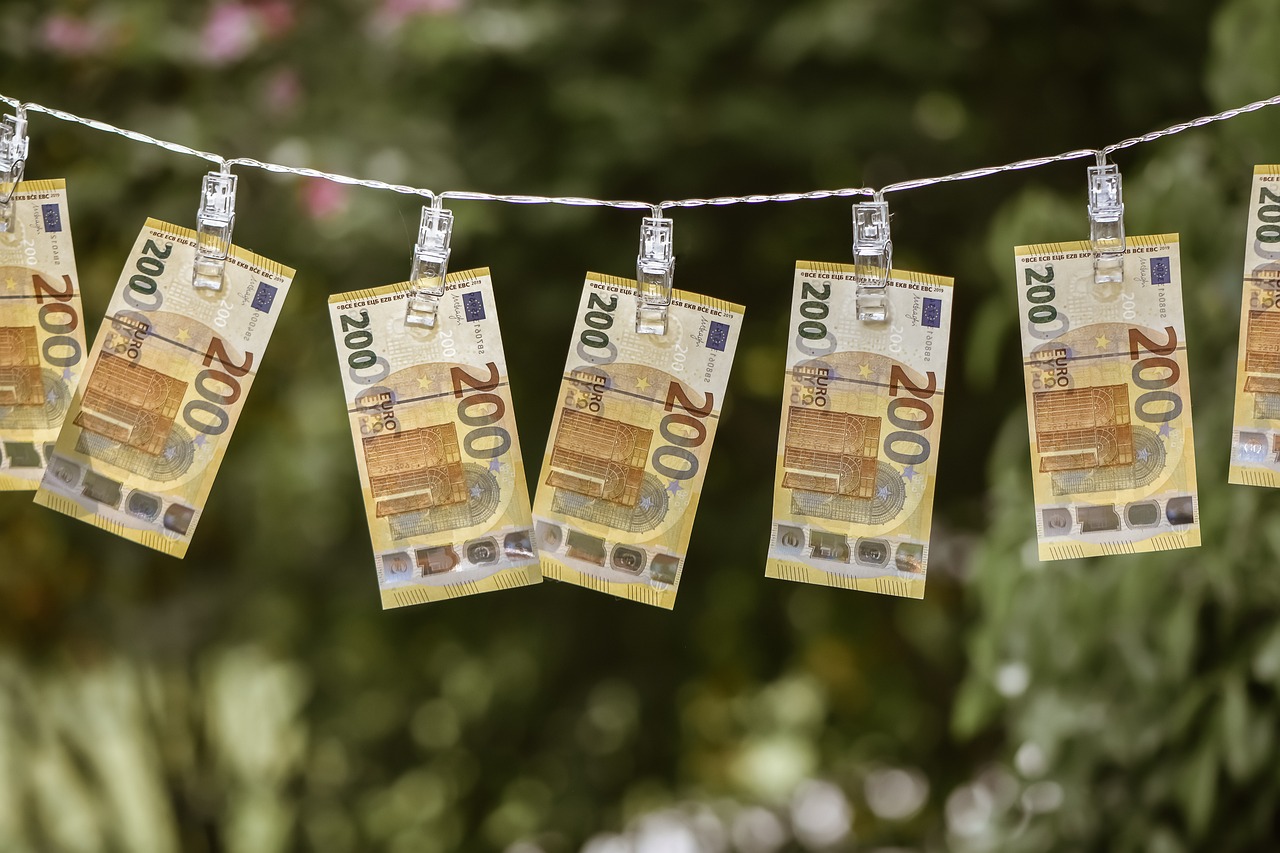
You’ve probably heard the word inflation countless times by now—especially in recent years. But do you truly understand what inflation is, how it works, and how it arises? In this article, we break down the concept of inflation in detail—how it begins, spreads, and affects everyday life.
To understand inflation, we first need to return to a fundamental question: What is money?
What Is Money?
Money is a medium of exchange, a unit of account, and a store of value. Its role is to facilitate the easier exchange of goods and services. In ancient times, before money existed, people relied on bartering—trading one good for another. But bartering had obvious downsides: how do you value one ox in pots, or a sack of rice in tailoring services?
The invention of money solved this issue. The first forms of money were commodity money—items that held intrinsic value, such as salt, cocoa beans, fur, or metals. Later came minted coins, often made of gold or silver, and eventually paper money, which was initially backed by gold (the so-called gold standard).
Today, most money in circulation doesn’t physically exist—it’s just numbers on digital accounts. This is fiat money, and its value relies solely on the trust in the institutions (usually central banks) that issue it.
How Does Inflation Occur?
Inflation is like a shadow that follows economic growth. Moderate inflation is normal—even desirable. But when it spins out of control, it becomes like a silent disease—unnoticeable until it begins to erode the social fabric.
Let’s break it all down in more detail.
Definition of Inflation
Inflation is the increase in the general price level of goods and services over time. It’s not about the rising price of a single product (like fuel), but a systemic phenomenon where nearly everything becomes more expensive.
The result? The purchasing power of money falls.
If inflation is 10% annually, it means that something that costs 1,000 dinars this year will cost 1,100 next year. So, for the same amount of money—you get less.
The Four Main Drivers of Inflation
a) Monetary Inflation – Caused by an Increase in the Money Supply
This is the most basic and common type of inflation.
When the government or central bank “prints” money (or creates it digitally) faster than the economy is producing goods and services, there’s an excess of money in circulation.
Imagine the economy as a basket of apples and a bucket of money:
- 10 apples and 10 bills → each apple is worth 1 bill.
- 10 apples and 20 bills → each apple now costs 2 bills.
Example: Germany after World War I (more on this below).
b) Cost-Push Inflation – Caused by Rising Production Costs
When producers face rising costs of raw materials, energy, wages, or transportation, they increase prices to maintain profit margins.
This often happens during:
- Energy crises (e.g., oil price spikes)
- Supply chain disruptions (e.g., during the pandemic)
Example: The 1970s OPEC oil embargo led to a global inflation surge.
c) Demand-Pull Inflation – Caused by Increased Consumer Demand
This occurs when consumers want to buy more than the market can supply.
Imagine everyone suddenly wants to buy TVs, but factories can’t keep up with demand—prices will go up.
Common during:
- Low interest rate environments
- Government stimulus or direct cash support
- Periods of rising employment and wages
d) Expected Inflation & Psychology
Inflation isn’t just caused by reality—it’s also driven by expectations.
If people believe prices will rise:
- They start buying early → demand increases
- Workers demand higher wages → costs increase
- Companies preemptively raise prices → inflation becomes self-fueling
This is dangerous because it creates an inflationary spiral—workers, firms, and banks all act to protect themselves, which only accelerates inflation.
Who Creates Money – and How Does It Become Excessive?
In modern economies, money isn’t created solely by central banks. Over 90% of today’s money is created when commercial banks issue loans. When a bank approves a loan, it literally creates new money by crediting the borrower’s account.
This money enters circulation and becomes part of the economy’s total money supply.
Central banks, on the other hand, manage the core tools of monetary policy—interest rates, reserve requirements, and open market operations (buying/selling government bonds)—to control money supply and price stability.
When Does Inflation Get Out of Control?
The problem begins when money—whether printed excessively or created through unsustainable borrowing—grows faster than the production of goods and services. That’s when inflation arises. If not stopped in time, it can be devastating.
Uncontrolled inflation:
- Destroys savings (money loses value each month)
- Discourages saving
- Accelerates spending (people rush to use money while it still has value)
This dynamic crushes long-term planning—for households and businesses alike. Companies can’t plan costs, investments become risky, and wages lag behind prices—leading to growing poverty and societal unrest.
One Step Further – HYPERINFLATION
The worst-case scenario is hyperinflation, when prices rise daily. Technically, it’s defined as inflation over 50% per month for more than 30 consecutive days.
In this environment, trust in the currency, banking system, and even the state itself collapses.
But Is Inflation Always Bad?
The paradox is that inflation isn’t always bad. Moderate inflation (1–3% per year) is considered desirable in modern economies. It encourages spending, stimulates investment, and helps reduce the real burden of debt.
Gradually rising prices incentivize consumers to buy now—fueling economic activity. It also helps indebted countries repay obligations in “cheaper” money.
Inflation Is Also a Psychological Phenomenon
People, businesses, and investors make decisions based on expectations. If the belief spreads that prices are rising uncontrollably, it becomes a self-fulfilling prophecy. Even without real triggers, collective fear alone can ignite inflation.
A Brief History of Inflation
Inflation isn’t new—it’s existed for as long as money has. Here are some of the most infamous episodes:
1. Roman Empire (3rd Century AD)
Roman emperors debased silver coins to finance wars and elite luxury. The result? Severe inflation and economic collapse.
2. Weimar Germany (1921–1923)
To pay war reparations, the government printed vast amounts of paper money. Bread cost 250 marks in January 1923—by November, it was 200 billion marks. Prices doubled every 3–4 days. Monthly inflation reached 29,500%.
Anecdote: A woman left her handbag (with money inside) on the street—when she returned, the bag was stolen, but the money was untouched.
3. Zimbabwe (2007–2008)
Annual inflation reached 79.6 billion percent. A 100 trillion Zimbabwe dollar note couldn’t buy bread. Prices doubled every 25 hours.
People fled to South Africa or Botswana to buy basic goods. Eventually, Zimbabwe abandoned its currency in favor of the U.S. dollar and South African rand.
4. Yugoslavia (1994)
Due to war, sanctions, corruption, and poor governance, the government printed money uncontrollably. By early 1994, monthly inflation reached 313 million percent. People spent their salaries immediately. Street money dealers thrived, and new currency (the “new dinar”) had to be introduced, backed by gold and foreign reserves.
Winners and Losers of Inflation
Losers:
- People with fixed incomes—pensioners, public sector workers, welfare recipients.
- Savers—money loses value faster than bank interest can keep up.
- Landlords with fixed rent contracts or bondholders with fixed interest—returns lose real value.
Winners:
- Borrowers—those with fixed-rate loans repay with money that’s worth less.
- Governments with large debts—inflation erodes the real burden of debt.
- Owners of real assets—property, gold, stocks, and artwork often retain or grow in value.
- Speculators & gray market actors—when inflation is high, regulation fails, and underground markets thrive (e.g., smuggling, currency speculation).
Inflation in the 21st Century: What Lies Ahead?
Since the COVID-19 pandemic, the world has faced a resurgence of inflation. Supply chain shocks, energy crises, and geopolitical tensions (like the war in Ukraine) triggered inflation spikes in developed economies for the first time in decades.
The question remains: Is this just a cyclical wave—or a sign of deep systemic shifts in the global economy?
Be smart—invest smart. Don’t keep your money under the mattress—it may soon be worthless, and inflation isn’t slowing down any time soon…
If you’re not sure where to invest, check out our detailed article: Top Investments in 2025 With Maximum Return.
If you enjoyed this article, share it with your friends and subscribe to our YouTube channel “MALAMEDIJA” where we regularly publish various documentary programs.
Thanks for reading,
Your MALAMEDIJA



